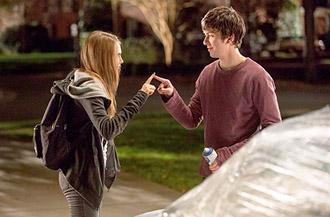|
|
Book vs. Movie: Paper TownsBy Ben GruchowAugust 10, 2015
The Book Paper Towns starts up rather quickly, even given its overall short length. Our first exposure to the world of the narrator is as a kid, where he tells us about Margo and himself as nine-year-old neighbors in a suburb of Orlando, Florida. Having established this, it gives us our first introduction to what the thematic concept of the novel is going to be: Quentin and Margo happen upon a dead man in a neighborhood park, the victim of an obvious suicide. Their reactions to this discovery are very different, although they both leave the site equally quickly. Quentin has a fairly typical reaction; Margo, though, is more curious about the identity of the dead man than traumatized. She hypothesizes, coming to Quentin’s window later that night, that “all of his strings were cut”—a faint but unmistakable reference, in this context, to a breakdown. After this point, the book flashes forward eight or so years to Quentin’s senior year in high school; in that time, we are told, he and Margo have drifted apart. They still live next door to each other, but rarely communicate and never socialize. She has become fairly popular, and is looked up to by a good amount of the student population. Quentin has his own friends, Ben and Radar, and as we catch up with the older versions of these characters, their senior year is coming to an end. Quentin’s life has become punctuated by predictability, which suits him fine. That changes one night when Margo shows up at his window again, for the first time since they were kids, and this is what kicks the main plot of the book into action: Margo has a sort of all-nighter revenge bender she needs to go on, and she entices Quentin to join her as her getaway driver. She doesn’t have access to her car; Quentin has access to his, by way of a short narrative explanation that introduces us to two positively lovely characters we’ll come back to in a bit.
|

|
|
|

|
Friday, November 1, 2024
© 2024 Box Office Prophets, a division of One Of Us, Inc.


